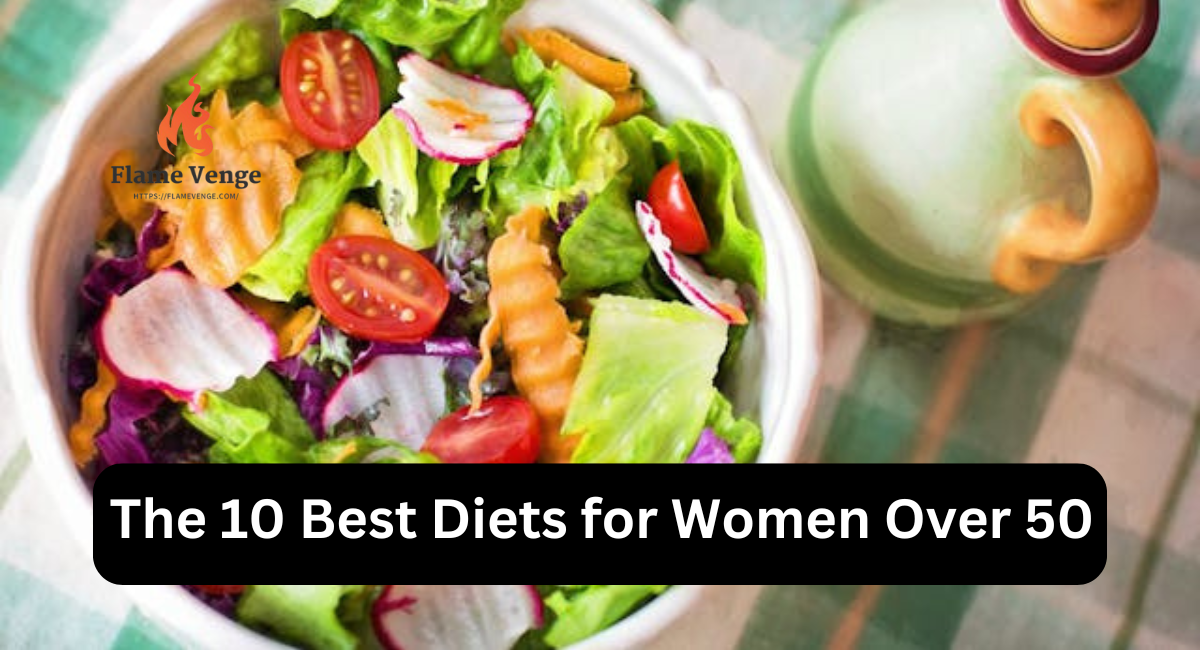As women age, their nutritional needs and health priorities often shift. Women over 50 may face changes in metabolism, bone density, and hormone levels, which can influence dietary requirements. A balanced and well-considered diet can help manage weight, maintain energy levels, and support overall health. Here are ten of the best diets for women over 50:
1. Mediterranean Diet
The Mediterranean diet is widely praised for its heart-healthy benefits. It emphasizes:
- Fruits and Vegetables: Full of nutrients like vitamins, minerals, and antioxidants.
- Whole Grains: Such as oats, brown rice, and whole wheat.
- Healthy Fats: Olive oil, nuts, and seeds provide essential fatty acids.
- Lean Proteins: Fish, poultry, and legumes are the primary protein sources.
- Moderate Dairy: Preferably low-fat or fat-free options.
This diet supports cardiovascular health, reduces inflammation, and helps with weight management. It’s also linked to a lower risk of chronic diseases like diabetes and cancer.
2. DASH Diet (Dietary Approaches to Stop Hypertension)
The DASH diet is designed to manage blood pressure and improve heart health. Key features include:
- High in Fruits and Vegetables: Rich in potassium and fiber.
- Whole Grains: Provides energy and supports digestive health.
- Lean Proteins: Includes fish, poultry, and plant-based proteins.
- Low-Fat Dairy: Sources of calcium and vitamin D.
- Reduced Sodium: Helps manage blood pressure levels.
The DASH diet has the potential to contribution in dropping blood pressure and dropping the risk of both heart disease and stroke.
3. Plant-Based Diet
Everything about a plant-based diet is eating things made from plants. This comprises:
- Vegetables: A wide variety of colors and types.
- Fruits: Fresh, frozen, or dried without added sugars.
- Legumes: Beans, lentils, and peas are great for getting protein.
- Nuts and Seeds: Provide essential fats and proteins.
- Whole Grains: Brown rice, quinoa, and whole-wheat products.
This diet supports weight loss, reduces inflammation, and lowers the risk of chronic diseases. Additionally, it may be beneficial to digestion and weight management.
4. Low-Carb Diet
A low-carb diet limits carbohydrate intake, focusing on proteins and fats. Variants include:
- Keto Diet: Extremely low in carbs and high in fats, promoting ketosis.
- Atkins Diet: Emphasizes low-carb foods with phased reintroduction of carbs.
The advantages include losing weight and better-controlling blood sugar levels. However, it’s essential to choose healthy fats and proteins and avoid excessive consumption of processed low-carb foods.
5. Whole30 Diet
The Whole30 diet is a 30-day plan that gets rid of certain foods.
- Processed Foods: No sugar, alcohol, grains, legumes, or dairy.
- Focus on Whole Foods: Fresh vegetables, fruits, meats, seafood, and eggs.
The Whole30 diet can help identify food sensitivities and promote better eating habits. It’s a reset program rather than a long-term diet, encouraging a balanced approach to food after the initial 30 days.
6. Intermittent Fasting
Intermittent fasting involves cycling between eating and fasting periods. Common methods include:
- 16/8 Method: Not eating for 16 hours and only eating for 8 hours.
- 5:2 Method: Eating regular meals for five days and less on two days, but not in a row.
Intermittent fasting benefits include weight loss, improved metabolic health, and better blood sugar control. To meet nutritional needs, it’s essential to focus on nutrient-dense foods during eating periods.
7. Flexitarian Diet
The flexitarian diet is primarily plant-based but allows for occasional meat consumption. It includes:
- Plant-Based Foods: Fruits, vegetables, legumes, and whole grains.
- Occasional Meat: Lean cuts and moderate amounts.
- Focus on Nutrient-Rich Foods: Ensures adequate intake of vitamins and minerals.
This diet can help you manage your weight, keep your heart healthy, and reduce your risk of long-term illnesses.
8. Anti-Inflammatory Diet
An anti-inflammatory diet focuses on reducing inflammation and includes:
- Omega-3 Fatty Acids: Originate in oily fish, flaxseeds, and nuts.
- Fruits and Vegetables: These are especially foods that have a lot of antioxidants, like berries and leafy greens.
- Whole Grains: Such as quinoa and brown rice.
- Spices: Turmeric and ginger have anti-inflammatory properties.
This diet can help with arthritis, digestive issues, and overall health by reducing chronic inflammation.
9. Low-FODMAP Diet
The Low-FODMAP diet is designed to manage digestive issues like IBS (Irritable Bowel Syndrome). It involves:
- Limiting FODMAPs: Fermentable oligosaccharides, disaccharides, monosaccharides, and polyols.
- Focusing on Digestible Foods: Low-FODMAP fruits, vegetables, and grains.
This diet helps identify food triggers for digestive discomfort and can improve gut health and overall well-being.
10. Balanced Diet
A balanced diet ensures that all food groups are included in appropriate proportions. Key elements are:
- Variety: Includes fruits, vegetables, whole grains, lean proteins, and dairy.
- Moderation: Controls portion sizes and limits added sugars and unhealthy fats.
- Hydration: Ensures adequate water intake.
A balanced diet supports overall health, weight management, and energy levels. It provides a comprehensive approach to meeting nutritional needs without eliminating food groups.
Conclusion
Choosing the right diet for women over 50 depends on health goals, preferences, and medical conditions. Choosing the right foods for your body can be made easier if you talk to a doctor or nutritionist. Focusing on nutrient-dense foods and balanced eating patterns can support women’s health and well-being throughout their later years.
READ ALSO:
The 4 Best Healthy Breakfast Items at Starbucks, Recommended by Dietitians

